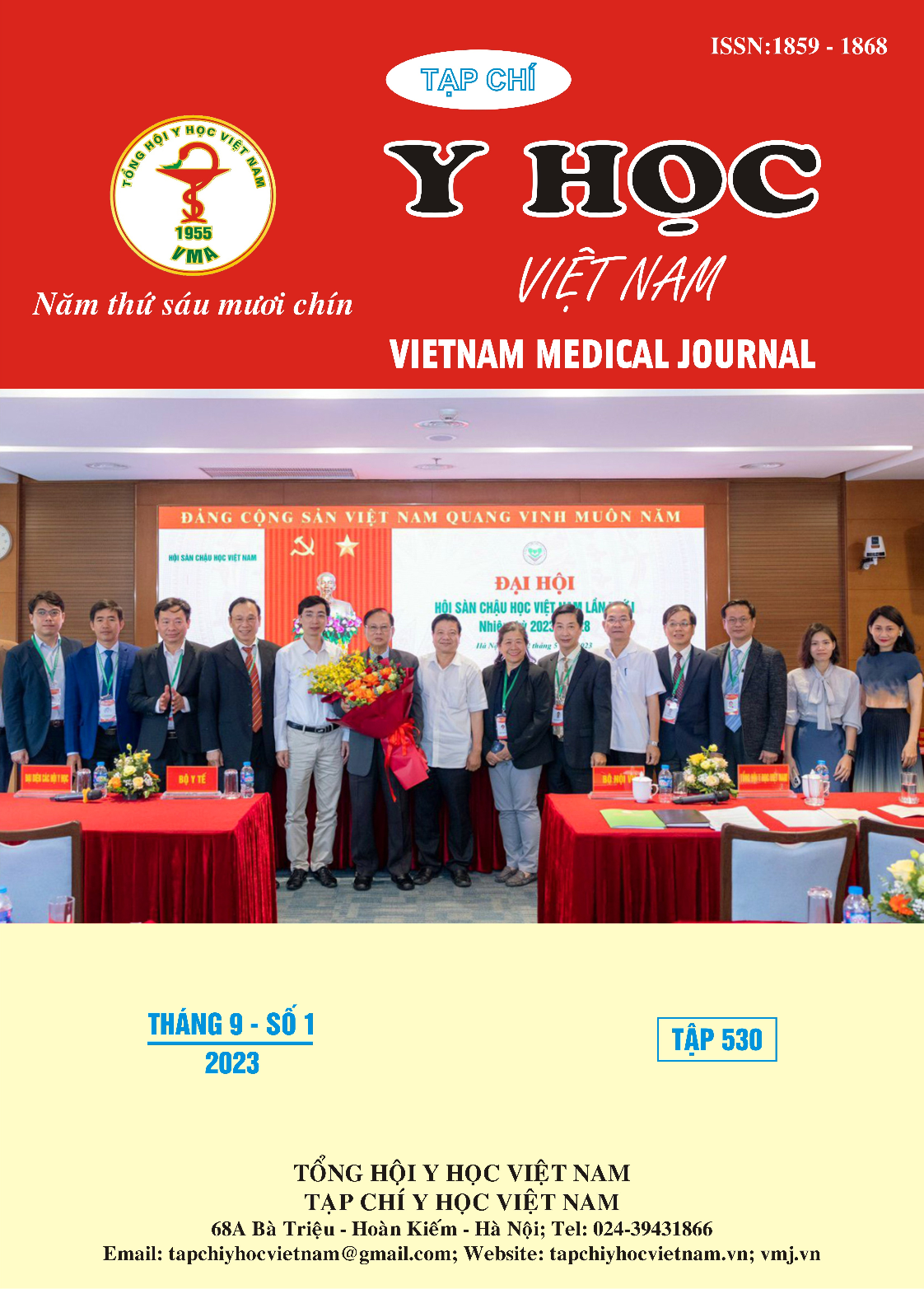HIGH PREVALENCE OF HEPATITIS C CO-INFECTION AND ITS ASSOCIATION WITH SECOND-LINE THERAPY OUTCOMES AMONG HIV/AIDS PATIENTS IN HANOI
Main Article Content
Abstract
Introduction: This study examines the prevalence of Hepatitis C (HCV) co-infection and its association with treatment outcomes among HIV/AIDS patients taking second-line therapy at Bach Mai Hospital and National Hospital for Tropical Diseases. Participants and Methods: We conducted a prospective cohort from 2009 to 2016 at two large HIV out-patient clinics at National Hospital for Tropical Diseases and Bach Mai Hospital. A total of 120 patients who failed first-line antiretroviral therapy (ART) and starting second-line at the study sites were enrolled to the study. We followed patients for at least 12 months. CD4 cell counts and viral load testing were performed at 6 months (M6) and 12 months (M12) of follow-up. We used t-test and chi-square test to compare the treatment outcomes between HCV-coinfected group and non-coinfected group at M6 and M12. Results: The overall prevalence of HCV co-infection among participants was 48.3%. At baseline, the proportion of patients at WHO clinical stage 3 or 4 was 38,3%. The median CD4 cell counts and viral load at baseline were 69 cells/cm3 (IQR: 33 – 197.5) and 27,200 copies/mL (IQR: 6.430 – 104.000). At 6 and 12 months of treatment with second-line regimens, the median of CD4 counts was reported as 168 cells/mm3 (IQR: 108.5 – 259) and 240.5 cells/mm3 (150 – 347), respectively. Compare between HCV-coinfected and non-coinfected group, the patients with HCV negative found to be have better responses than those who have positive (median at M6 was 177 cells/cm3 vs. 152 cells/cm3, p=0.05; and at M12 was 253 cells/cm3 vs. 230 cells/cm3, p=0.07). The proportion of patients have viral suppression (SVR) at M6 and M12 in HCV co-infected group were 37.1% and 62.9%, which slightly lower than non-coinfected group (SVR at M6 was 50%, p=0.15; and at M12 was 69.0%, p=0.48). Conclusion: Our study found that among a large sample of HIV/AIDS patients taking second-line therapy in Hanoi, patients with non-coinfected with HCV have better CD4 counts outcomes than patients with HCV-coinfected. However, the SVR between two groups showed no significant different.
Article Details
Keywords
HIV/AIDS; HCV co-infection, second-line, antiretroviral therapy, ART.
References
2. Thornton AC, Jose S, Bhagani S, et al. Hepatitis B, hepatitis C, and mortality among HIV-positive individuals. AIDS. 2017;31(18):2525-2532.
3. Platt L, Easterbrook P, Gower E, et al. Prevalence and burden of HCV co-infection in people living with HIV: a global systematic review and meta-analysis. Lancet Infect Dis. 2016;16(7):797-808.
4. Đỗ Duy Cường, Nông Minh Vương, Trần Xuân Bách. Tỷ lệ đồng nhiễm HBV, HCV trên các bệnh nhân HIV và một số yếu tố liên quan tại Khoa Truyền nhiễm, bệnh viện Bạch Mai. Tạp chí Y học Dự phòng. 2015;6(166):276.
5. Taye S, Lakew M. Impact of hepatitis C virus co-infection on HIV patients before and after highly active antiretroviral therapy: an immunological and clinical chemistry observation, Addis Ababa, Ethiopia. BMC Immunol. 2013;14:23.
6. Weis N, Lindhardt BO, Kronborg G, et al. Impact of hepatitis C virus coinfection on response to highly active antiretroviral therapy and outcome in HIV-infected individuals: a nationwide cohort study. Clin Infect Dis. 2006;42(10):1481-1487.
7. Jia J, Zhu Q, Deng L, et al. Treatment outcomes of HIV patients with hepatitis B and C virus co-infections in Southwest China: an observational cohort study. Infect Dis Poverty. 2022;11(1):7.


